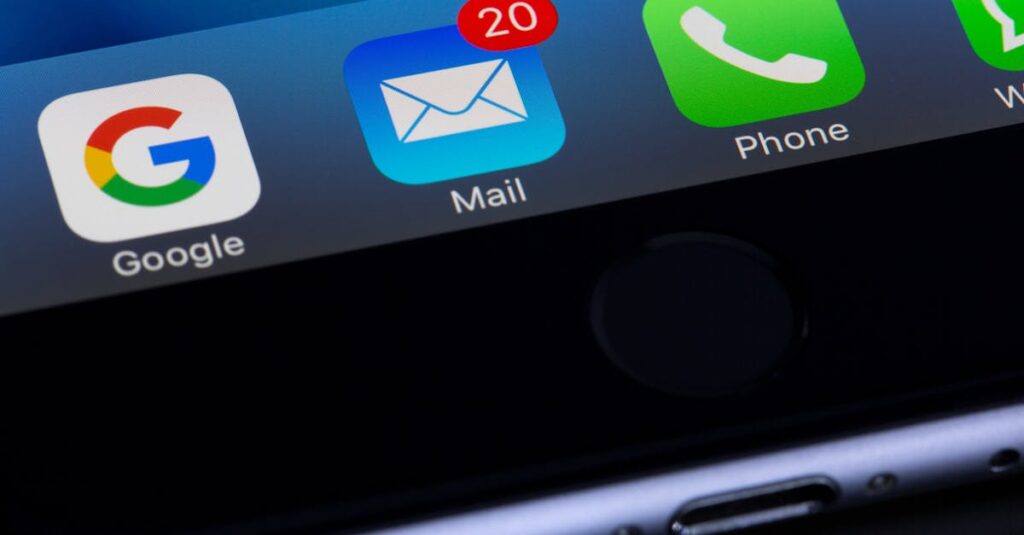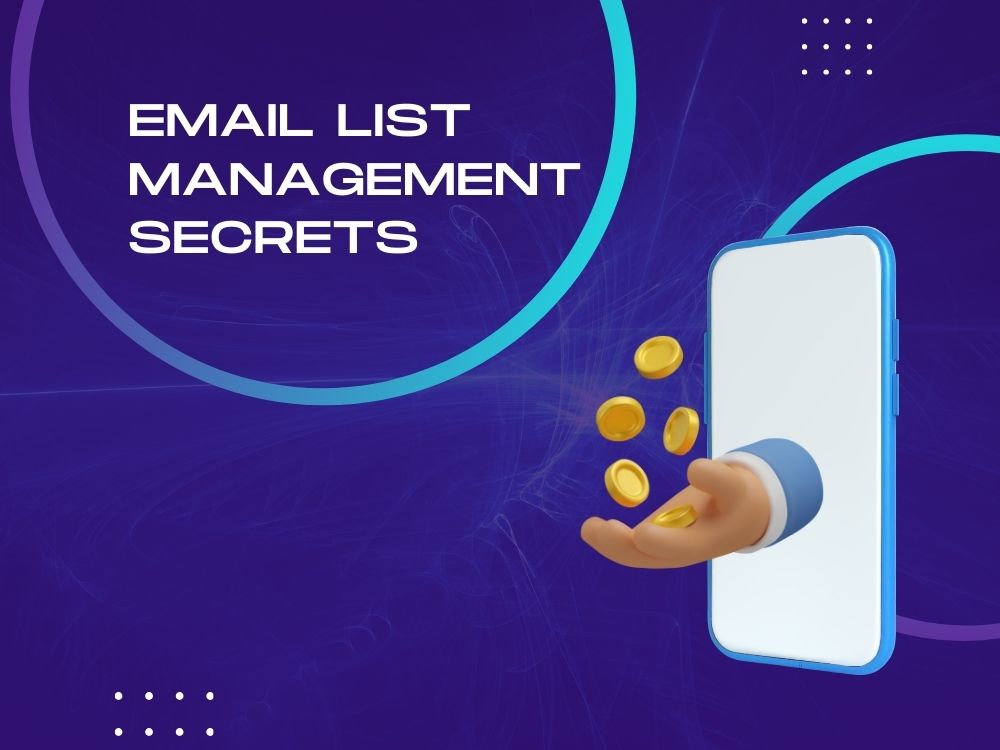Introduction: The Hidden Power of a Well-Managed Email List
Imagine crafting the perfect email campaign, only to see dismal open rates, lackluster engagement, and unsubscribes piling up. Frustrating, right? You’re not alone. Many businesses struggle with email marketing because they neglect a crucial aspect—email list management.
Managing your email list effectively is the secret sauce behind higher open rates, better engagement, and increased conversions. Whether you’re a seasoned marketer or just starting, this guide will unveil email list management secrets that will transform your campaigns and maximize your ROI.
Table of Contents Email List Management
What is Email List Management and Why It Matters
Definition of Email List Management
Email list management is the process of organizing, segmenting, and maintaining your email subscriber list to ensure better deliverability, engagement, and conversion rates. It involves removing inactive subscribers, segmenting users based on behavior, and following best practices to keep your list engaged and active.
Why Email List Management is Essential
- Higher Open and Click Rates: A well-maintained list ensures your emails reach interested subscribers.
- Reduced Spam Complaints: Avoid sending emails to unengaged users who might mark them as spam.
- Better Deliverability: ISPs favor senders with healthy email engagement.
- Increased ROI: A targeted, engaged list leads to more conversions and revenue.
Building a High-Quality Email List (The Right Way!)
Why Quality Over Quantity Matters
Many marketers fall into the trap of chasing huge email lists instead of high-quality subscribers. Buying email lists or adding people without consent might increase numbers, but it damages engagement rates and can get you flagged as a spammer.
Proven Strategies to Grow Your Email List Organically
- Lead Magnets: Offer valuable content (eBooks, discounts, webinars) in exchange for emails.
- Exit-Intent Popups: Capture visitors before they leave your site.
- Social Media Promotions: Use giveaways and contests to collect emails.
- Referral Programs: Encourage subscribers to invite friends.
Best Practices for Email Signup Forms
- Keep it short: Only ask for essential details (name, email, preferences).
- Use a compelling CTA: “Get Your Free Guide Now” works better than “Subscribe.”
- Offer Immediate Value: Let subscribers know what they’ll receive instantly.
Mastering Email List Segmentation for Maximum Impact
What is Email Segmentation?
Segmentation is the practice of dividing your email list into smaller, targeted groups based on specific criteria. This ensures your emails are relevant and personalized, leading to better engagement.
Effective Ways to Segment Your Email List
| Segmentation Type | Example Use Case |
|---|---|
| Demographics | Targeting based on location, age, or gender |
| Purchase Behavior | Sending product recommendations based on past purchases |
| Engagement Level | Re-engagement campaigns for inactive subscribers |
| Preferences | Personalized content based on user interests |
Email List Hygiene: How to Keep Your List Healthy
The Dangers of a Dirty Email List
- Higher bounce rates affect your sender reputation.
- Spam complaints can get your domain blacklisted.
- Low engagement signals ISPs that your emails aren’t valuable.
Steps to Maintain Email List Hygiene
- Remove inactive subscribers regularly.
- Use double opt-in to confirm email validity.
- Validate emails with verification tools.
- Monitor open and click-through rates to detect disengagement.
When & How to Re-Engage Inactive Subscribers
- Win-back campaigns: Send a “We Miss You” email.
- Exclusive offers: Provide special discounts.
- Feedback requests: Ask why they stopped engaging.

Email Deliverability Secrets for Higher Inbox Placement
Understanding Email Deliverability
Deliverability determines whether your emails land in the inbox or spam folder. Factors like sender reputation, authentication, and engagement rates play a role.
Best Practices to Improve Email Deliverability
- Authenticate Emails: Set up SPF, DKIM, and DMARC.
- Avoid Spam Triggers: Limit excessive links and spammy words.
- Warm Up Your Email Domain: Gradually increase email volume for new domains.
- Maintain Consistency: Sending sporadic emails hurts engagement.
Optimizing Email Content for Better Engagement
Crafting Irresistible Subject Lines
- Use power words to spark curiosity.
- Personalize with the recipient’s name.
- A/B test different subject lines to find the best performer.
Writing Compelling Email Copy
- Be concise and benefit-driven.
- Use storytelling to create emotional connections.
- Have a clear call-to-action (CTA) to drive action.
Designing Emails for Better Readability
- Mobile-friendly layouts are a must.
- Use bullet points and headings for scannability.
- Include images, GIFs, or videos to enhance engagement.
Email Automation: Save Time & Improve Results
What is Email Automation?
Automation allows you to send the right message at the right time without manual effort.
Essential Automated Email Campaigns
- Welcome Series: Introduce new subscribers to your brand.
- Abandoned Cart Reminders: Recover lost sales.
- Post-Purchase Follow-Ups: Encourage repeat business.
- Re-Engagement Sequences: Revive inactive subscribers.
Tracking & Analyzing Email Performance
Key Email Marketing Metrics to Monitor
- Open Rate: Measures how many recipients open your emails.
- Click-Through Rate (CTR): Tracks link clicks within emails.
- Bounce Rate: Identifies invalid or blocked emails.
- Unsubscribe Rate: Indicates disinterest or over-emailing.
How to Use Data to Optimize Campaigns
- A/B Testing: Experiment with different subject lines and email formats.
- Adjust Send Times: Find the optimal time for your audience.
- Heatmaps: Understand how users interact with your emails.
Common Email List Management Mistakes to Avoid
- Buying email lists (hurts reputation and engagement).
- Ignoring segmentation (leads to generic messaging).
- Overloading subscribers (causes high unsubscribes).
- Not cleaning the list regularly (leads to deliverability issues).
FAQ – Answering Your Email List Management Questions
How often should I clean my email list?
Every 3–6 months to remove inactive subscribers and improve deliverability.
What’s the best way to reduce unsubscribes?
Send valuable, personalized content and allow subscribers to set their email preferences.
How can I get more people to open my emails?
Use engaging subject lines, personalize emails, and send them at optimal times.
What’s the ideal email sending frequency?
Typically, 1–2 emails per week work best, but it depends on your audience.
Conclusion: Take Control of Your Email List Today!
A well-managed email list is the foundation of successful email marketing. By focusing on quality subscribers, segmentation, automation, and hygiene, you can boost engagement, improve deliverability, and drive more conversions.
Ready to transform your email marketing strategy? Start implementing these email list management secrets today and watch your business thrive!

